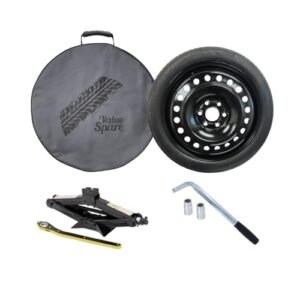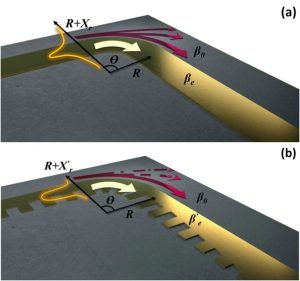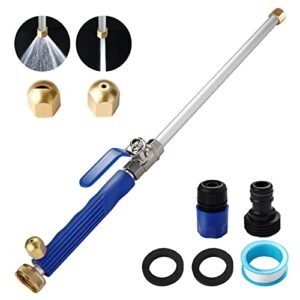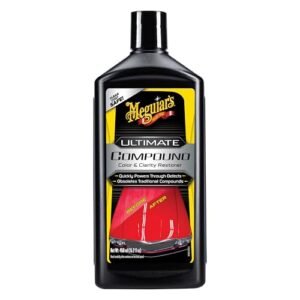
Contents
- How Much Does a Lamborghini Cost? Your Ultimate Guide to Owning the Dream
- The Sticker Price: What to Expect for a Brand-New Lamborghini
- 🛒 Recommended Product
- Beyond the Sticker: The True Cost of Lamborghini Ownership
- 🛒 Recommended Product
- The Used Lamborghini Market: A More Accessible Dream?
- Tips for Aspiring Lamborghini Owners
- Common Mistakes to Avoid
- Conclusion
- 🛒 Recommended Product
- FAQ
How Much Does a Lamborghini Cost? Your Ultimate Guide to Owning the Dream
The roar of the engine, the sleek lines, the undeniable presence – the allure of a Lamborghini is a powerful one. For many, it represents the pinnacle of automotive engineering and a symbol of success. But beyond the dream, a practical question often arises: How much does a Lamborghini really cost?
It’s a question with a complex answer, extending far beyond the initial sticker price. Owning a Lamborghini is an investment, not just in a vehicle, but in an entire lifestyle. In this detailed guide, we’ll break down the true cost of bringing one of these magnificent machines into your life, from the initial purchase to the ongoing expenses, all in a friendly, helpful tone.
The Sticker Price: What to Expect for a Brand-New Lamborghini
Let’s start with the exciting part: the initial cost of a new Lamborghini straight from the factory. While exact prices can fluctuate based on market demand, region, and specific model year, here’s a general idea of what you can expect for the most popular models:
🛒 Recommended Product
- Lamborghini Huracán: Often considered the “entry-level” V10 model, the Huracán family (including variants like the EVO, Tecnica, and Sterrato) typically starts in the range of $200,000 to $250,000 USD for its base configurations. Highly optioned versions can easily climb well past $300,000.
- Lamborghini Urus: The brand’s revolutionary Super SUV, the Urus, offers incredible performance with everyday usability. Its starting price generally falls between $230,000 to $280,000 USD. Like all Lamborghinis, extensive customization can push this price significantly higher.
- Lamborghini Aventador (and its successor, the Revuelto): As the flagship V12 supercar, the Aventador (now succeeded by the Revuelto hybrid supercar) occupied the top tier. Previous Aventador models started around $400,000 to $500,000 USD, with special editions and highly optioned versions soaring well over $600,000. The Revuelto, with its advanced hybrid technology, is expected to command a similar or even higher premium.
Remember: These are just base prices. The true cost of a new Lamborghini is rarely just the sticker price.
Beyond the Sticker: The True Cost of Lamborghini Ownership
The purchase price is only the first chapter. To truly understand “How much does a Lamborghini cost?”, you need to factor in a series of additional, often substantial, expenses. Think of it as a multi-step financial journey:
Step 1: Factory Options and Personalization
This is where your Lamborghini truly becomes yours, but it comes at a price. Lamborghini offers an extensive list of options and personalization choices that can dramatically increase the final cost.
- Special Paint Colors: While standard colors are included, unique metallic, matte, or custom Ad Personam colors can add $10,000 to $50,000+.
- Carbon Fiber Packages: Exterior and interior carbon fiber accents are popular and very expensive, potentially adding $15,000 to $40,000+.
- Forged Wheels: Upgraded wheel designs and finishes can cost an extra $5,000 to $15,000.
- Interior Trims and Stitching: Custom leather, Alcantara, contrast stitching, and specialized seat options can add $5,000 to $20,000+.
- Advanced Infotainment and Driver-Assist Systems: While some are standard, premium sound systems or advanced safety features often come at an additional cost.
- Brake Caliper Colors: Even small details like custom brake caliper colors can be a $1,500 to $2,500 option.
Key Takeaway: It’s not uncommon for a new Lamborghini to have $50,000 to $150,000 (or more) in optional extras added to its base price.
Step 2: Taxes, Fees, and Delivery Charges
Before you even drive it off the lot, several mandatory costs will add to your total:
- Sales Tax: This is usually the biggest additional cost. Depending on your state or country, sales tax can be anywhere from 0% to over 10% of the vehicle’s total purchase price. On a $300,000 car, a 7% sales tax is $21,000!
- Destination/Delivery Fee: Lamborghini, like all manufacturers, charges a fee to transport the vehicle from the factory to the dealership. This typically ranges from $3,000 to $5,000.
- Documentation Fees: Dealerships charge various administrative fees, usually a few hundred dollars.
- Registration and Licensing Fees: Annual fees to register your vehicle and obtain license plates vary by location but are generally a few hundred to over a thousand dollars annually.
- “Gas Guzzler” Tax: In the U.S., some high-performance vehicles that don’t meet specific fuel economy standards are subject to a “Gas Guzzler” tax, which can be $1,000 to $7,700.
Step 3: High-Performance Insurance Premiums
Insuring a high-value, high-performance vehicle like a Lamborghini is significantly more expensive than a standard car. Factors include the car’s value, repair costs, your driving record, age, and location.
- Annual Insurance Costs: Expect premiums that can range from $5,000 to well over $20,000 annually. Some owners, particularly younger ones or those in high-risk areas, might even face higher costs.
- Specialty Insurers: Many Lamborghini owners opt for specialist insurance providers who understand the unique needs of exotic cars, offering agreed-value policies and specific coverage for track use or stored vehicles.
Crucial Tip: Always get an insurance quote before committing to a purchase. This cost can be a major budget breaker.
Step 4: Scheduled Maintenance and Unexpected Repairs
Lamborghinis are meticulously engineered machines, but their performance comes with specific maintenance requirements and costs. These are not everyday service prices.
🛒 Recommended Product
- Routine Maintenance: An annual service or oil change isn’t your typical quick lube job; it’s a specialized service using specific fluids and parts that can cost $1,000 to $2,000 or more.
- Major Services: Every few years, your Lamborghini will require more extensive servicing, often including spark plugs, fluid flushes, and filter replacements. These major services can easily run into the $5,000 to $10,000+ range, depending on the model and what needs to be done.
- Tires: High-performance tires designed for Lamborghinis are expensive and wear out much faster than regular tires. A full set of tires can cost anywhere from $1,500 to $3,000+ and may need replacing every 10,000-15,000 miles, or even sooner with spirited driving.
- Brakes: Carbon-ceramic brakes, standard on many Lamborghinis, offer incredible stopping power but are incredibly expensive to replace. Rotors alone can cost $5,000-$10,000 per axle, plus pads and labor.
- Unexpected Repairs: While modern Lamborghinis are more reliable than older models, any unscheduled repair can be costly due to specialized parts and labor rates. Even a minor sensor replacement can cost hundreds to thousands of dollars.
Bottom Line: Budget at least $3,000 – $5,000 annually for maintenance and consumables, and be prepared for higher costs in years requiring major service or tire/brake replacement.
Step 5: Fuel Costs
Lamborghinis exclusively demand high-octane premium fuel. Given their powerful engines and often less-than-stellar fuel efficiency (especially in city driving), your fuel bill will be considerably higher than a typical car. Expect single-digit miles per gallon (MPG) in many driving conditions.
Step 6: Depreciation
While some rare, limited-edition Lamborghinis can appreciate, most models will depreciate, especially in their first few years.
- Initial Drop: A new Lamborghini can lose 20-30% of its value in the first few years alone. This is an “invisible” cost but a very real financial factor if you ever plan to sell the car.
Step 7: Storage and Detailing (Optional, but Common)
Many Lamborghini owners invest in specialized care for their vehicles:
- Climate-Controlled Storage: If you don’t have a suitable garage, professional climate-controlled storage facilities can cost $200 to $1,000 per month.
- Professional Detailing: To maintain that showroom shine, regular professional detailing, paint correction, or ceramic coating applications can add hundreds to thousands of dollars annually.
The Used Lamborghini Market: A More Accessible Dream?
For many, a used Lamborghini offers a more attainable path to ownership. Prices for pre-owned models can vary wildly based on mileage, condition, model year, and service history.
- Older Models (e.g., Gallardo, early Huracán): Some older Gallardo models can start from $100,000 to $150,000, with early Huracáns sometimes found in the $150,000 to $200,000 range.
- Benefits of Used: A lower purchase price, and the initial depreciation hit has already been absorbed by the previous owner.
- Risks of Used: Older models might be out of warranty, meaning you’re fully responsible for all repair costs. A thorough pre-purchase inspection (PPI) is absolutely critical. Maintenance history is paramount.
Warning: While the purchase price may be lower, the running costs (insurance, maintenance, fuel) for a used Lamborghini are still essentially the same as a new one, and potentially even higher if it hasn’t been meticulously maintained.
Tips for Aspiring Lamborghini Owners
If the dream is still alive after considering the numbers, here are some helpful tips:
- Budget Beyond the Purchase Price: Understand and plan for all the ownership costs – insurance, maintenance, taxes, and fuel. This is the single most important piece of advice.
- Research, Research, Research: Dive deep into the specific model you’re interested in. Look up forums, owner reviews, and detailed cost breakdowns.
- Get a Pre-Purchase Inspection (PPI): If buying used, a comprehensive PPI by a qualified Lamborghini specialist is non-negotiable. It could save you tens of thousands of dollars in hidden issues.
- Seek Specialist Insurance: Work with an insurance broker who specializes in exotic and high-performance vehicles to find the best coverage at a competitive rate.
- Start Saving Early: Begin setting aside money specifically for the purchase and ongoing costs. A healthy down payment will significantly reduce financing costs.
- Consider a Warranty (if buying used): If available, an extended warranty can provide peace of mind, though they can be expensive.
Common Mistakes to Avoid
- Ignoring Hidden Costs: The biggest mistake is focusing only on the purchase price and being blindsided by insurance, maintenance, and taxes.
- Skipping a Pre-Purchase Inspection (PPI): This is especially critical for used vehicles. A bad PPI can turn a dream car into a financial nightmare.
- Underestimating Insurance Costs: Many people are shocked by the annual insurance premiums. Get quotes early!
- Neglecting Maintenance History (for used cars): A complete and verifiable service history from authorized dealerships or reputable specialists is crucial. Avoid cars with gaps in their records.
- Falling for an “Unbelievable Deal”: If a Lamborghini price seems too good to be true, it almost certainly is. There might be hidden damage, a salvage title, or a host of mechanical issues.
Conclusion
So, how much does a Lamborghini cost? A new one will likely set you back anywhere from $250,000 to $600,000+ when you factor in options, taxes, and fees. On top of that, expect to budget $10,000 to $30,000+ annually for insurance, maintenance, and fuel. A used model might bring the entry price down to $100,000 to $200,000, but the ongoing running costs remain substantial.
🛒 Recommended Product
Owning a Lamborghini is an extraordinary experience that comes with a significant financial commitment. While the numbers might seem staggering, for those who can comfortably afford it, the joy of ownership, the thrill of the drive, and the sheer presence of a Lamborghini are unparalleled. With careful planning and a clear understanding of all the costs involved, the dream can indeed become a magnificent reality.
FAQ
Q. What is the starting price for a new Lamborghini?
A. The entry-level Lamborghini models, such as the Huracán EVO RWD, typically start in the low to mid-$200,000 range. However, prices vary significantly based on specific models, configurations, and regional markets.
Q. How much do the more expensive or flagship Lamborghini models cost?
A. Flagship models like the Aventador (now succeeded by the Revuelto) can easily start from over $500,000. Limited-production or special edition models, such as the Sián FKP 37 or Countach LPI 800-4, can command prices well into the millions of dollars due to their exclusivity and advanced technology.
Q. Are there additional costs beyond the sticker price when buying a Lamborghini?
A. Absolutely. The sticker price is just the beginning. Buyers must factor in optional extras and customization (which can add tens or even hundreds of thousands), destination fees, gas guzzler taxes, sales taxes, registration fees, and potentially dealer markups, all of which significantly increase the final cost.
Q. How much does a used Lamborghini typically cost?
A. Used Lamborghini prices vary widely based on model, year, mileage, condition, and market demand. Older, higher-mileage Huracáns can sometimes be found in the high-$100,000s, while well-maintained, slightly older Aventadors might still be in the $300,000-$400,000 range. Depreciation can make them more accessible, but they still remain premium vehicles.
Q. What are the ongoing costs of owning a Lamborghini, such as maintenance and insurance?
A. Owning a Lamborghini comes with substantial ongoing costs. Annual maintenance can range from several thousands to tens of thousands of dollars, depending on the service required. Insurance premiums are also exceptionally high, often exceeding $5,000-$10,000 annually, due to the car’s value, performance, and high repair costs. Fuel consumption is also significant.
Q. Why are Lamborghinis so expensive?
A. Lamborghini’s high price tag is a result of several factors: the brand’s exclusivity and prestige, the use of cutting-edge engineering and high-performance materials (like carbon fiber), meticulous hand-assembly processes, powerful and complex engines, advanced technology, and the extensive research and development required to create such highly specialized vehicles.
Q. Do Lamborghinis hold their value well?
A. Generally, Lamborghinis, like most high-end luxury vehicles, do depreciate. However, their depreciation curve can be less steep than some other luxury cars, especially for desirable models, low-mileage examples, or limited-production editions which can sometimes appreciate in value over time. Mainstream models will typically see a significant drop in value during their first few years.
Affiliate Disclosure: As an Amazon Associate, I earn from qualifying purchases made through links on this site.















